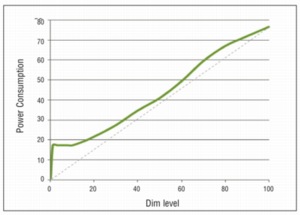T5 demonstrates the capabilities of intelligent lighting control

Carbon emissions from Terminal 5 at Heathrow Airport are being reduced by thousands of tonnes a year using intelligent lighting control.
With Terminal 5’s first anniversary approaching in March 2009, Andromeda has commissioned an energy-performance study of the campus-wide intelligent lighting-control system in association with BAA to highlight the many benefits of intelligent control systems and key issues currently faced by the industry.
One of the biggest obstacles facing the building-services industry is the prevalent perception towards project costing, which considers only the immediate outlay of building-services technologies at the design phase. This approach can restrict innovation and prohibit the use of energy-saving technologies over cheaper alternatives. However, a whole-life-costing approach will help the client achieve the right solution financially and environmentally. The big question is whether the cheaper solution is the most cost effective?’
Terminal 5 is a landmark project both for Andromeda and BAA. It demonstrates how short payback periods and the energy-saving potential of integrated control solutions can be achieved.
Andromeda delivered a control solution based around a KNX bus infrastructure, using DALI as the central protocol for luminaires. The entire system sits on the BAA IP network, interfacing with the campus-wide monitoring system via an OPC server. The solution is primarily a lighting-control system, with testing and monitoring of emergency lighting, digital dimming, virtual energy metering of lighting loads, monitoring of third-party equipment such as alarms in disabled WCs, along with items of major plant.
Andromeda has been monitoring the performance of the system over time to provide data that will demonstrate the energy-saving credentials of the system in practice and consolidate the positive operating performance results to date. The data expresses energy-saving data both as carbon savings and financial return on investment. The energy study is under review by external auditors. However, the figures that have already been validated provide evidence that integrated control technologies can achieve short payback periods.
The study pinpointed six key areas for savings.
1. Dimming should be regarded as an integral part of an energy-saving strategy. For the T5 light fittings used throughout the terminal, the power consumption is almost directly related to the light output (Fig.1).
Using the Andromeda DALI/KNX system, vast energy savings can be achieved by reducing light levels in response to external brightness or simply reducing levels in all areas.
2. A large area for saving is output limitation, where generous allowances for light levels are trimmed back to the original specification. This is best demonstrated by the car park, where lighting levels are limited to a maximum of 20%, as the 80% maximum previously employed was considered too bright. At 20% dim level, there has been no complaint that the environment is too ‘dingy’, and the power consumption is 25% of the maximum. This illustrates how simple savings can be achieved without compromising the lighting design.
3. External daylight control embraces three strategies to make maximum use of natural light.

The first strategy is dusk-to-dawn control — with lighting turned on when ambient light drops below a certain lux threshold in the evening and turned off in the morning. Lighting under this form of control in London is off for 52% of the year.
The next strategy is automatic daylight control. Some areas of T5 have lighting scenes that change in response to the externally measured lux level. These scenes can change as frequently as every half hour.
Constant light control uses a sensor to continuously measure the ambient daylight and control lighting to maintain a constant light level.
4. Intelligent presence detectors control lighting in areas which are not consistently occupied. Lighting will come on when a person enters the area and switch off or dim to a minimum safety level after a set period of time after the person leaves. Such areas include back-of-house areas and toilets, where lights could otherwise be left on at all times. Using DALI control, light can be dimmed as a warning before being switched off.
5. Andromeda’s system is connected to a master head-end control — giving the client complete control over the system and its maintenance. Time-based scenarios are held within distributed control modules which are updated by the master head-end control, offering savings through optimised switching programs. The master control is a business tool and can be used to manage, monitor and record data from the system, which, in turn, will support the maintenance strategy for the site.
6. The Andromeda system also enables savings to be realised on the labour-intensive maintenance associated with a system of this size, through its fully automated emergency light testing and monitoring.
The initial study that the system will reduce carbon emissions at T5 by 5800 t a year and achieve cost savings of around £950 000 per annum, giving a payback of under five years. These savings can be potentially further consolidated as the system is recognised through the Carbon Trust’s Enhanced Capital Allowance scheme.
Martyn Suggett, portfolio technical leader for BAA says: ‘I am more convinced than ever that the T5 lighting-control system will deliver significant energy savings against conventionally lit passenger terminal buildings within the BAA airports group, and it has quickly been recognised as the benchmark for all major lighting installations within BAA in the future. We are now working on a day-to-day basis with the system and looking at ways to further refine and enhance it, increasing subsequent energy savings. The system therefore acts as a constant operational tool, helping BAA tackle rising energy costs proactively, where conventional systems could not evolve in this way.’
The system has also been officially recognised for its innovation through winning the DALI AG Award 2008.








